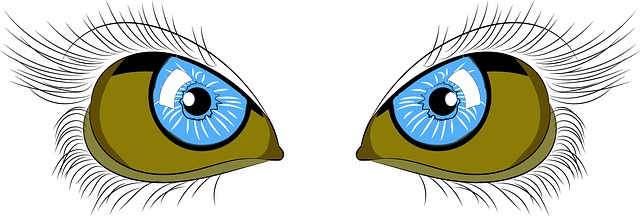
Cataracts: Understanding, Treating, and Preventing Vision Loss in Older Adults
Cataracts and your Vision. As a result, as we grow older, changes to our eyesight are common. Consequently, one of the most frequent and treatable conditions among older adults is cataracts. Here, they are clouding of the eye’s natural lens that can make everyday activities like reading, driving, or even recognizing faces difficult. So then, in this post, we’ll explore what cataracts are. Also, their history, symptoms, treatment options. And what you can do to reduce your risk.
What Are Cataracts?

Cataracts and your Vision. Subsequently, cataracts occur when the lens of the eye becomes cloudy, affecting the way light passes through to the retina. And this cloudiness can develop slowly over time, making vision appear blurry, dim, or faded.
Furthermore, the lens, which helps focus light onto the retina, is normally clear. But as proteins in the lens begin to break down and clump together with age or injury, they form cloudy areas—cataracts.
A Brief History of Cataracts

Cataracts and your Vision. For example, cataracts have been known to medicine for over 2,000 years. So then, ancient Indian texts described a surgical technique called couching, where the cloudy lens was dislodged using a sharp tool. Besides, though primitive and often dangerous, it shows how long humans have sought solutions to this condition.
Hence, modern cataract surgery, involving removal of the cloudy lens and replacement with an artificial intraocular lens (IOL). As a result, began in the mid-20th century and has become one of the safest and most common procedures worldwide.
Symptoms of Cataracts

Cataracts and your Vision. Furthermore, Cataracts can develop so gradually that you may not notice the changes at first. Common symptoms include:
- Blurred, dim, or cloudy vision
- Difficulty seeing at night or in low light
- Sensitivity to light and glare
- Halos around lights
- Faded or yellowed colors
- Frequent changes in glasses or contact lens prescriptions
- Double vision in a single eye
If you experience any of these symptoms, it’s essential to see an eye specialist promptly.
Treatments and Cure
Cataracts and your Vision. Contrary to the social media lies and nonsense, the only effective cure for cataracts is surgical removal of the cloudy lens and replacement with a clear artificial lens.
Cataract Surgery
- Quick and safe: Performed as a day procedure, usually taking under 30 minutes
- Painless: Local anesthesia is used
- Fast recovery: Most people notice improved vision within a few days
- Highly successful: Over 95% of cases result in significantly better vision
Modern surgery uses ultrasound or laser technology to gently break up the cataract before removal, making the process safer than ever.
Can Cataracts Be Prevented?

Cataracts and your Vision. Here, while cataracts are a common part of aging, certain habits and lifestyle changes may slow their development:
Tips for Prevention

- Wear sunglasses that block 100% of UVA and UVB rays
- Quit smoking, which increases the risk of cataract formation
- Eat a healthy diet, rich in antioxidants (vitamin C, E, lutein, and zeaxanthin)
- Manage health conditions like diabetes and high blood pressure
- Avoid excessive alcohol consumption
- Get regular eye exams, especially after age 60
Cataracts and your Vision. As an example, though you can’t always avoid cataracts entirely, early detection and healthy habits can help you maintain better vision longer.
Final Thoughts
Cataracts and your Vision. Consequently cataracts may be a natural part of aging, but that doesn’t mean we’re powerless. So then, thanks to modern medicine, cataracts are highly treatable, and recovery is quick. However, staying informed and proactive about your eye health can preserve your independence and quality of life.
Besides, Have you had your eyes checked recently? If not, consider making that appointment—it’s a small step that could make a big difference.
Pensioner Fitness – Helping You Stay Strong, Steady, and Self-Reliant
DONATE
DONATE
Pensioner Fitness
Pensioner Fitness Awards
THE BUSINESS CONCEPT, BEST IN BUSINESS AWARDS
- “MOST INSPIRING SENIOR WELLNESS WEBSITE 2023“
THE GLOBAL HEALTH AND PHARMA, FITNESS AND NUTRITION AWARDS
2. “BEST SENIOR FITNESS AND NUTRITION SPECIALIST 2023“
THE MIDDLE EAST AND AFRICA BUSINESS AWARDS
3. “ MOST INCLUSIVE FITNESS PROVIDER 2023″
THE CORPORATE LIVE WIRE GLOBAL AWARDS 2023/2024
4. ” FITNESS ADVISORY PLATFORM OF THE YEAR“ 2023/2024
In Conclusion
Also a family history of cataracts raises your risk of developing them. And some genetic mutations lead to congenital cataracts (present at birth). Asa result, when it comes to age-related cataracts, genetic mutations may make your lens more vulnerable to damage from environmental risk factors. Researchers continue to explore these connections. So then, while you can’t change your genetic risk, it helps to know your family history and share it with your provider.
Important Note *
Remember that everyone is different, it is ultimately YOUR RESPONSIBILITY to find what your body responds to. So please do your due diligence before trying anything new, including getting Medical Advice to ensure your safety and peace of mind.
Connect with me and leave a comment